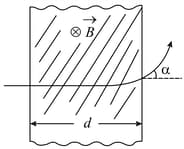Statement 1 : An alpha particle is a doubly ionized helium atom.
Statement 2 : An alpha particle carries 2 units of positive charge.
Important Questions on Magnetic Effect of Current
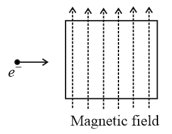
During its motion inside the chamber
| Column 1 | Column 2 | Column 3 |
| 1. Electron with | (i) | (P) |
| 2. Electron with | (ii) | (Q) |
| 3.Proton with | (iii) | (R) |
| 4. Proton with | (iv) | (S) |
In which case will the particle describe a helical path with axis along positive z direction?
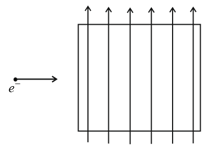
An electric field of appropriate magnitude is also applied so that the electron travels un-deviated without any change in its speed through the chamber. We are ignoring gravity. Then, the direction of the electric field is,
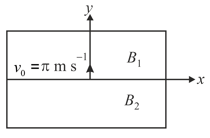
| Column 1 | Column 2 | Column 3 |
| 1. Electron with | (i) | (P) |
| 2. Electron with | (ii) | (Q) |
| 3.Proton with | (iii) | (R) |
| 4. Proton with | (iv) | (S) |
In which case would the particle move in a straight line along the negative direction of y axis
| Column 1 | Column 2 | Column 3 |
| 1. Electron with | (i) | (P) |
| 2. Electron with | (ii) | (Q) |
| 3.Proton with | (iii) | (R) |
| 4. Proton with | (iv) | (S) |
A rectangular region of dimensions has a constant magnetic field into the plane of the paper as shown. On one side the region is bounded by a screen. On the other side positive ions of mass and charge are accelerated from rest and towards the screen by a parallel plate capacitor at constant potential difference , and come out through a small hole in the upper plate. Which one of the following statements is correct regarding the charge on the ions that hit the screen?
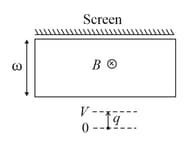
A proton (mass ) accelerated by a potential difference flies through a uniform transverse magnetic field . The field occupies a region of space by width . If be the angle of deviation of proton from the initial direction of motion (see figure), the value of will be:
